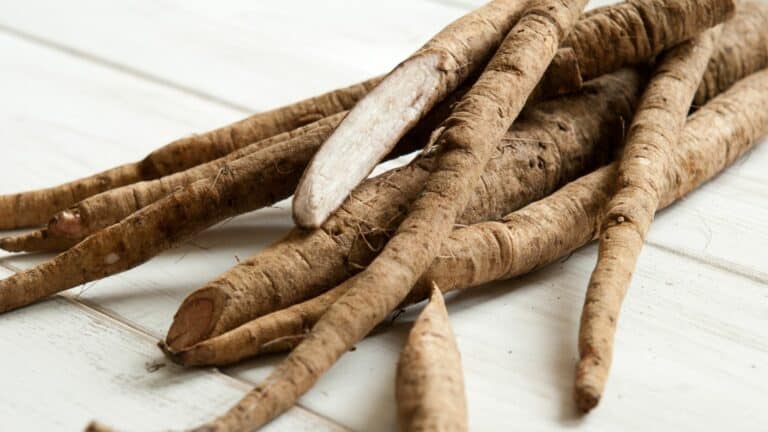The positive effects of burdock root
If we don’t take care of our liver, over time the liver will become dense and hard and its spongy consistency will be lost.
The root practically owns all trace elements and beyond Vitamin A, C and K, as well as traces of B vitamins.
Uses of burdock root
The burdock root came to be used in a variety of ways:
- tea – Dried burdock root can be used wonderfully for tea. Its sweet and earthy taste combines well with other flavors.
- tincture – (The tincture is recommended Burdock root from Nature’s Answer)
- Juiced – For certain clinical pictures it is good to juice one or more roots.
- “Liver Rescue” Broth – Fresh burdock root is part of the popular medicinal liver broth. The root can also be used in other medicinal broths (e.g. Healing broth) can also be used.
- Soup – You can also use the sliced, fresh burdock root in soups.
Harvest burdock root yourself
Typically, burdocks are biennial plants. The spherical, pink inflorescence with flower heads only develops in the second year.
Burdocks are not only known for the fact that their fruit heads tend to stick to clothing or animal fur. Its strong taproot, which extends up to one meter into the ground, also makes the burdock so special.

With a bit of luck, you can also find the burdock in your home. They are often found in places where more demanding plants do not like it. Roadsides, fences, walls, dams or rubble dumps are some examples. Autumn is the optimal time to harvest the long, fleshy roots of burdock.
You can also cultivate burdock in your own garden. A sunny to partially shaded spot is ideal for the plant. Basically, the plant is very robust and easy to care for.
